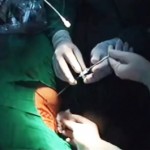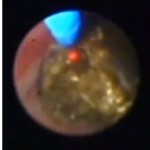Editorial: Micro-PNL vs RIRS: dealer’s choice? The devil is in the details
Advances in minimally invasive endourological techniques continue to provide the Urologist a myriad of options for the management of symptomatic renal calculi. Previously, shock wave lithotripsy (SWL) or standard percutaneous nephrolithotomy (PNL) were the only two endourological options available. Yet, limitations of these two ‘standard’ techniques result from hard or dependent stones (for SWL) or the potential of increased morbidity during the treatment of small renal calculi (for PNL). Now the introduction of smaller fibre-optic needle-scopes combined with laser stone fragmentation (micro-PNL or ‘microperc’) provides access to difficult-to-reach renal calculi with minimal patient morbidity. Moreover, newer flexible ureteroscopes, along with nitinol baskets and graspers (retrograde intra-renal surgery or ‘RIRS’) allow another minimally invasive option for hard-to-reach renal calculi.
In the present issue of BJUI, Sabnis et al. present a well performed, randomised, prospective trial comparing microperc to RIRS for the management of renal calculi of <1.5 cm in diameter. They determined that both procedures were essentially identical in their ability to remove small-to-moderate sized renal stones with minimal patient morbidity/complications. Yet, both of these procedures have inherent limitations that are unique to the instrumentation used for each technique. Microperc has limited applicability for stones located anteriorly within the kidney, while RIRS is an ideal technique to access symptomatic renal stones within an anterior calyx. RIRS may not be able to target lower pole calculi in those patients with an acute infundibular angle or stones in a calyceal diverticulum, whereas a microperc can be used to reach hard-to-access calculi.
One must accept that both of these innovative procedures are inefficient in their ability for removal of large volume stones and neither technique offers an efficient method of clearing multiple stone fragments. Ideally, both microperc and RIRS should only be used for small volume renal calculi.
I would offer that both procedures are safe and effective alternatives for the management of small renal calculi. Yet, we must be realistic in offering these techniques to our patients, pairing each procedure with the most appropriate situation. Even in 2013, large volume renal calculi are best managed by standard or mini-PNL, where devices such as ultrasonic lithotripsy or dual ultrasonic/pneumatic lithotripsy offer efficient methods of stone removal. SWL is still a reasonable option for the treatment of renal calculi of ≤1 cm in diameter.
Now RIRS and microperc can be added to the list of treatment options for managing symptomatic renal calculi. In patients with large renal calculi, along with multiple medical comorbidities or bleeding diatheses/on anti-coagulation, RIRS provides another, yet inefficient, alternative for stone removal, often requiring multiple procedures to clear the stone. In those situations where the flexible ureteroscope cannot target a renal calculus of <1.5 cm, microperc provides the option of accessing the calculus, yet offers no method of efficiently clearing stone fragments. If we set reasonable expectations for the use of these two minimally invasive endourological techniques, our patients will surely benefit.
Glenn M. Preminger
Duke University Medical Center, Durham, NC, USA




Dear sir.
Microperc and RIRS are basinal same type of technique delivering intracorporeal lithotripsy by different instrument and therefore have yielded the same result. problem with lower pole calyx is also well known with RIRS. Microperc can definitely be of help in lower power stone where stone can be fragment not small sizes and pushed into pelvis with the flow of saline. I think for smaller stone ESWL is still the most common choice though it may not be available at all small center. I think we need RCT between ESWL and microperc for similarly matched patient to see whether intracorporeal laser lithotripsy or extracorporeal shock wave lithotripsy is more beneficial. Because for 1.5 cm renal stone ESWL can give same clearance without the risk of anesthesia.